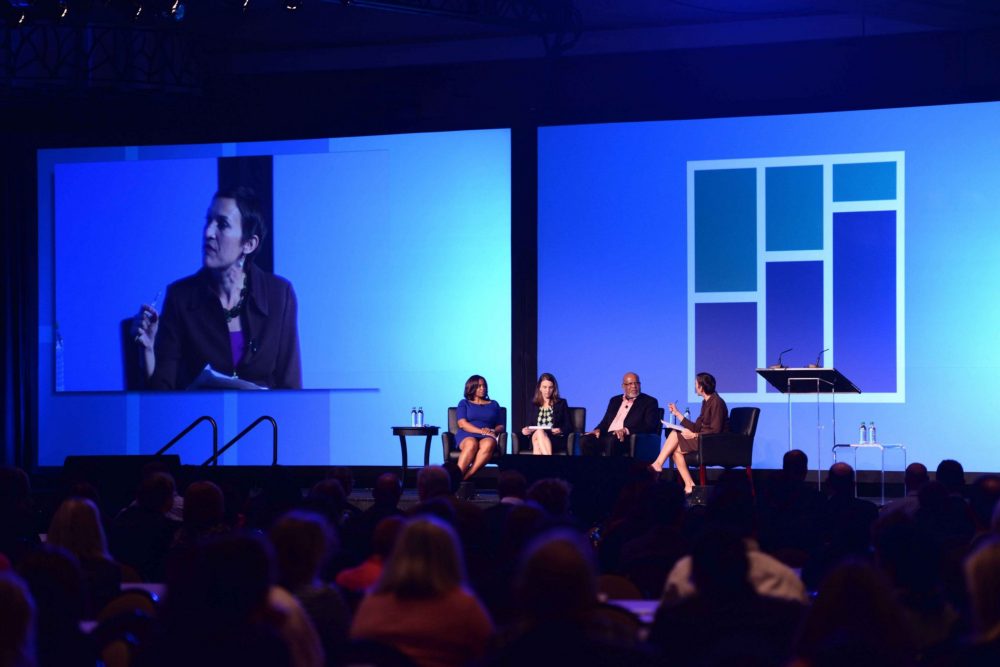
This year the conference surprised me yet again, but in a much different way. After some hard reflection, OFN's director Mark Pinsky explained how the organization decided to take a square look at, and try to do something about, an issue that affects the entire field and is almost never talked about:
The staff and boards of community development institutions are, as a rule, much whiter than the communities they serve.
Now I don't have hard data on this for the entire field, but OFN does for its members. In 2011, according to Pinsky, OFN removed a nominal requirement of membership that staff and board “reflect their communities” in exchange for getting data on how well they actually do so, trading, in his words “intention for transparency.”
“We thought this was a low bar,” Pinsky reported, “but only half met it.”
They also looked at voting patterns for the OFN board in 2012 and found “clear underrepresentation of small and people of color–led CDFIs.”
He referred to this as “third rail data,” noting that while there were many angles on diversity, inclusion, and equity that needed addressing, they chose to work on race first because of the structural racism that has specifically devastated many of the communities where CDFIs work.
The field, despite its origins in the civil rights movement, hasn't acheived internal equity, and is lagging behind the demographic changes of the country as a whole, which is limiting how well it can acheive its mission, he argued. “OFN has not done its job well enough,” said Pinsky. “I have not.”
At the conference what Pinsky says has been a coded conversation for too long was no more, with the opening plenary session, Pinsky's state of the field speech, and the facilitated discussions at the membership meetings all focused directly on the topic of how to become more inclusive and equitable, and how that will improve the actual work of CDFIs by helping to connect and hold them accountable.
Mary Elizabeth Owens of HOPE FCU asked in that first panel, “Is the diversity in this room representative of the communities we serve?” A quick look around made it impossible to answer yes. Lenwood Long of The Support Center was even more pointed: “Are we using the underserved to achieve our own goals, as opposed to being reflective of the community?”
Attendees learned about the work OFN was doing, with the help of Race Matters Institute and a grant from JPMorgan Chase. Some specifics include things like committing to at least 50 percent of the semi finalist pool for all hires being people who will increase staff diversity, and proactive outreach that had increased participation in the election process by people of color–led CDFIs by 57 percent.
The opening panel moderator, Adrienne Mansanares, noted how her organization, the Denver Foundation, had been challenged to pay interns, since unpaid internships perpetuate a lack of equity in terms of who gets opportunities to enter the field.
Mansanares also noted that this could be a difficult conversation for people who had devoted themselves to the field for decades and are doing good work but who don't reflect the communities they serve, even though there is no critique of individuals involved. She suggested that we sit with that discomfort a bit, rather than ignore it.
It's certainly not an easy topic, and not one to be addressed overnight. I heard that there was some push back along the lines of “But we want to be able to hire the best person!” for example. To which Bill Bynum, in his acceptance speech for the Ned Gramlich Award, suggested we think about being , “as innovative in creative diverse teams as we are in creating deals.” As many people I spoke with for my recent article about inclusive boards told me, making these kind of shifts requires explicit commitment.
It was a remarkably brave and powerful use of the strong position CDFIs are in right now to take this hard look at the field and commit to addressing this problem in this way. I am going to be very interested to follow their progress.
Has your organization made a conscious effort to become more diverse, more representative (on any front), and more equitable? Tell us about what you did.
(Photo of the OFN 2014 conference opening panel, © Sam Levitan.)






Comments